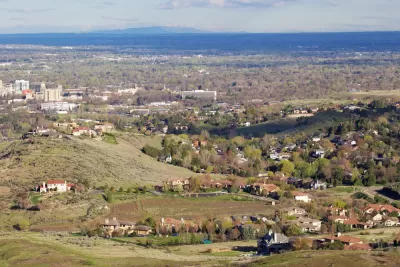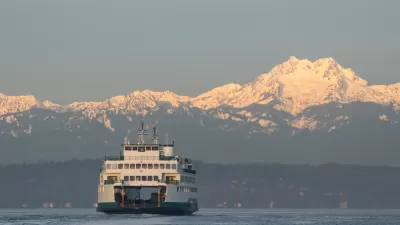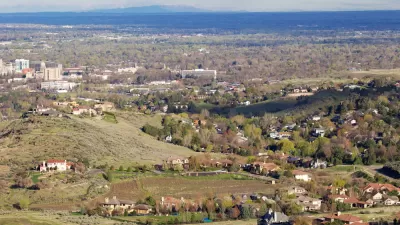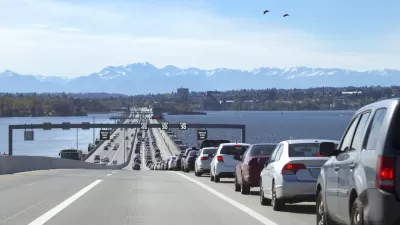Three cities on the periphery of the fast-growing Treasure Valley showcase different approaches to a sudden influx of newcomers.

Peripheral cities are gaining prominence as the Treasure Valley around Boise continues to grow, according to a recent article by Carolyn Komatsoulis for the Idaho Press.
“For surrounding counties in the Treasure Valley, the prospect of growth means many things: It can be an added pressure on development, the potential to change the character of a community, or provide an opportunity to do things right.”
The article examines growth management case studies from three cities in counties surrounding Boise—Mountain Home, Marsing, and Emmett. Each of these cities "are feeling the impacts of local growth and development in their own backyard,” according to the article, but choosing mush different responses—distinct from each other and from the precedent set by the communities already enveloped by the region's sprawling growth.
Mountain Home, previously known mostly as the home to the Mountain Home Air Force Base, has recently been crowned as the “Mural Capital of Idaho.” Brock Cherry, community development director for Mountain Home, is quoted extensively in the article, including describing growth plans that call for “higher-density residences, commercial and industry, and a lower percentage of single-family homes compared to some cities in the Treasure Valley.”
Marsing is attempting to accommodate new growth while also preserving farmland by sticking to its comprehensive plan. Higher density development is not included in that plan—or any plans in surrounding Owyhee County.
Finally, Emmett is cited as an example of a city developing quickly while focusing resources, often financed by developers, on the infrastructure necessary to accommodate a larger population. While some cities in the region never planned for their current population, Emmett city leader say they starting planning for the current influx of new residents severn years ago.
FULL STORY: Three cities, three counties, three growth hot spots in the Treasure Valley

Maui's Vacation Rental Debate Turns Ugly
Verbal attacks, misinformation campaigns and fistfights plague a high-stakes debate to convert thousands of vacation rentals into long-term housing.

Planetizen Federal Action Tracker
A weekly monitor of how Trump’s orders and actions are impacting planners and planning in America.

In Urban Planning, AI Prompting Could be the New Design Thinking
Creativity has long been key to great urban design. What if we see AI as our new creative partner?

Pedestrian Deaths Drop, Remain Twice as High as in 2009
Fatalities declined by 4 percent in 2024, but the U.S. is still nowhere close to ‘Vision Zero.’

King County Supportive Housing Program Offers Hope for Unhoused Residents
The county is taking a ‘Housing First’ approach that prioritizes getting people into housing, then offering wraparound supportive services.

Researchers Use AI to Get Clearer Picture of US Housing
Analysts are using artificial intelligence to supercharge their research by allowing them to comb through data faster. Though these AI tools can be error prone, they save time and housing researchers are optimistic about the future.
Urban Design for Planners 1: Software Tools
This six-course series explores essential urban design concepts using open source software and equips planners with the tools they need to participate fully in the urban design process.
Planning for Universal Design
Learn the tools for implementing Universal Design in planning regulations.
planning NEXT
Appalachian Highlands Housing Partners
Mpact (founded as Rail~Volution)
City of Camden Redevelopment Agency
City of Astoria
City of Portland
City of Laramie





























